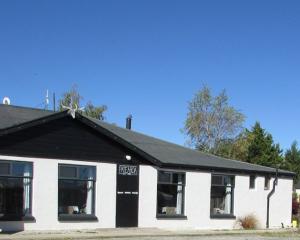
More details have now emerged about yesterday's incident in the back-country mountains near Wānaka.
The person survived after being trapped under snow when an avalanche was triggered about noon yesterday.
A skier named Irene said a party of five was skiing along Tower Ridge when they decided to drop down on the "steeper lower pitches" towards the north branch of the Motatapu River.
"We retrospectively agreed that we should have investigated the snowpack by digging a pit before dropping in, with more uncertainty and commitment in this terrain," Irene wrote on website avalanche.net.nz.
The first skier made two turns before "fractures broke" in the snow about 20m above them.
"We watched the skier for the duration of their ride, before the avalanche stopped. The skier was not visible."
Using an avalanche transceiver, the party, which included three avalanche professionals, found the buried skier and started the rescue effort.
"Digging began and their airway was cleared at about 7 minutes. No loss of consciousness or injuries occurred for the victim.
"The victim was able to successfully clear an air pocket around their face by punching at the snow as the avalanche was slowing down."
"We realize we made mistakes, and it's a valuable lesson in recognizing that there's times where anyone can let their guard down and get caught out no matter your skill level or experience."
Frantic shovelling
An Australian tourist has described the frantic scene as a person lay trapped a metre under an avalanche in the back-country mountains near Wānaka.
It was the second human-triggered avalanche within three days in the Wānaka area as calls go out for back-country skiers, snowboarders and climbers to exercise extreme caution and to monitor the avalanche and weather forecasts closely.
Melbourne resident Jason Stevenson was a passenger in a helicopter which came to assist both the trapped person and those trying to free him.
He said it was amazing work by some amazing people to get to the person trapped and dig him out of the snow.
"They were shovelling, shovelling like crazy to get them out. There were four people there going hell for leather to get them out", he said.
There was a real sense of urgency from all and he said they knew they only had a limited time to get them out.
"The adrenaline was pumping. The guys shovelling you couldn’t say enough about them. They were brilliant, absolutely brilliant."
He said it was an amazing sight to see the skiers shovelling.
"It was just surreal really. Out-of-the-world experience — sort of thinking about it a bit later — have we just seen that?
"It was over quite quickly really — a few minutes but I won’t forget it."
Mr Stevenson said he was in a helicopter to carry him to a back-country experience when the helicopter flew over a ridge and saw some deep snow, leading down into a valley.
"Our pilot said there could be an avalanche here so we went down the mountain into a deep valley and then saw the guys shovelling hard. We dropped our guy off and he got right into it."
The Mountain Safety Council confirmed in a statement yesterday five skiers were travelling in the area south of Treble Cone known as the “Gotleibs”, when one person was buried by an avalanche about 12.10pm.
The group, who were trained in avalanche-rescue techniques, managed to extricate the victim within five minutes, preventing further injury.
The group was not a guided party and reached the back country through access gates at Treble Cone.
It is unclear what happened to the group after the incident.
On Saturday, two snowboarders reportedly triggered an avalanche.
The Treble Cone ski patrol, along with two Search and Rescue avalanche dog teams responded quickly to the scene.
After carefully assessing the debris and speaking with those in the area, it was confirmed that no-one was buried or injured.
The Mountain Safety Council said both of the avalanches had been triggered by human activity.
Mr Stevenson said he did go snowboarding after yesterday’s incident but it was relatively short-lived given the conditions.
The weather was too warm and the snow could not stand the heat, he said. It was his first time in the area.
The Otago Southland Rescue Helicopter was also sent from Queenstown but, after sweeping the area, was not required.
Mountain Safety Council chief executive Mike Daisley said unseasonal snowfall and consistent westerly storms meant the avalanche risk remained significant.
"A considerable danger rating indicates dangerous avalanche conditions exist. This requires careful snowpack evaluation, cautious route-finding, and conservative decision-making to avoid triggering avalanches.
"It’s vital that anyone entering the back country knows how to assess the snowpack, recognises signs of instability, and carries the appropriate rescue gear, including an avalanche transceiver, shovel, and probe", Mr Daisley said.
— Additional reporting Regan Harris











